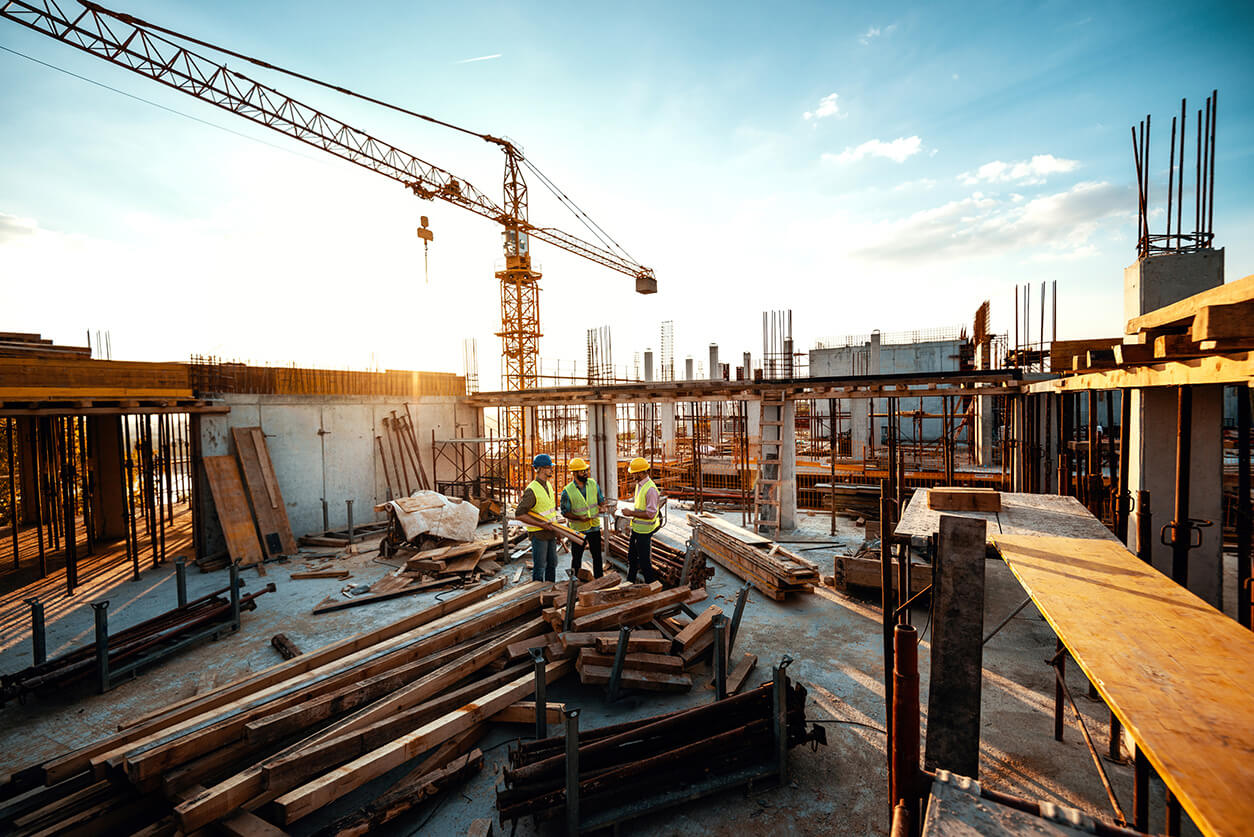The construction industry hasn’t been immune to the widespread damage caused by the Coronavirus pandemic. Projects have been on hold for months, planned jobs cancelled, and a lot of uncertainty remains when it comes to the future. Fewer projects mean less need for the raw materials involved in the construction process, like aggregate.
Aggregate is a coarse material used as a base for asphalt and cement, and generic construction fill. It’s mined in open pits where naturally occurring gravel is excavated and separated into different grades and sizes for various uses. Demand for this material moves along with the overall US construction cycle. While the industry is facing cyclical weakness, we believe that it’s likely things will turn around coming out of recession, and this could mean significant progress for the aggregate industry.
A Few Key Players
Supply in the US is fragmented with thousands of companies, but there’s a few players that stand to win in a major way from a turnaround.
It’s uneconomical to move the material far, so quarries are located near demand centers, which are often larger cities in high-growth states. This means that in most areas, aggregates are a localized monopoly or duopoly.
These dominant players have great pricing power. There are no substitutes for these materials, and almost every major construction project will use them. This means that the few companies who rule in their respective markets have the ability to push prices, even when demand is down. That power allows prices to consistently move up throughout the cycle.
It’s difficult for any new suppliers to emerge in a serious way. Aggregate quarries are built near riverbeds where there are natural deposits, but they also need to be located relatively close to urban demand centers. Undeveloped land that’s near major cities is hard to come by, and it’s even harder to get the necessary permits to begin mining. Beginning this process involves a lot of heavy machinery and noise, as well as dust and other environmental concerns. Because the process to get permission to open a mine can take years, the number of existing quarries has remained largely the same for decades.
Aggregate companies are natural consolidators, too. Instead of building new infrastructure to expand, industry leaders are more likely to acquire smaller companies. They tend to enter new markets through acquisition, keeping the number of players down.
A Cyclical Industry and Pent Up Demand
Construction almost always bottoms out when the economy is in recession as large, long-term projects often see halts, delays, and sometimes flat-out cancellations. That being said, the downcycles for this industry are usually short, and the expansions are lengthy.
Aggregates are used in all types of construction projects, the largest portion of which are roads and highways. Luckily, public infrastructure spend is the most resilient area to the industry’s cyclical nature. The budgets for these projects are tied to federal and state budgets, which tend to only grow over time.
Infrastructure has been a notoriously low priority for some time, and there has been an emphasis on short-term maintenance projects to keep roads up and running. This means there’s a looming need for several large overhaul projects, which may lead to a future demand spike as underlying infrastructure problems become too large to ignore. Success in aggregates could be greatly boosted by Congress’s next round of stimulus to combat the Coronavirus crisis. If this stimulus includes provisions for highways, it could be a great help to this industry.
There’s also room for demand growth within residential construction, which is often the first sector to recover from a recession. Housing projects have fallen considerably. The current low-interest rate environment and low inventories of new and existing homes means that many new home builds will be necessary.
Heeding the Caution Signs
We see a lot of signs pointing to an improving outlook for the aggregates industry, although it’s not an all-clear signal. State budgets are taking a significant hit as the pandemic persists, as they’re largely funded from taxes on gas, which has seen a huge demand downturn. To allocate for necessary, large infrastructure projects, individual states will need federal aid to avoid having their budgets slashed.
The Fixing Americas Surface Transportation (FAST) Act, is also set to expire this fall. This bill funded and governed federal surface transportation spending. A FAST Act replacement will be needed for the aggregates industry to recover from the current downturn. It’s worth noting, however, that both parties support infrastructure bills that increase highway spending, and a cut in highway spend is unlikely.
While we recognize the risks in the construction industry, we believe the aggregate market has both strength and room to grow. When making any investment decisions it’s important to look at not only the fundamentals of individual companies, but overall industry trends. At Manning & Napier, our dedicated analysts look closely into company and industry backgrounds, before making any investment moves.
Enjoying what you're reading? Sign up to have new insights delivered directly to your inbox.
This material contains the opinions of Manning & Napier Advisors, LLC, which are subject to change based on evolving market and economic conditions. This material has been distributed for informational purposes only and should not be considered as investment advice or a recommendation of any particular security, strategy or investment product.



